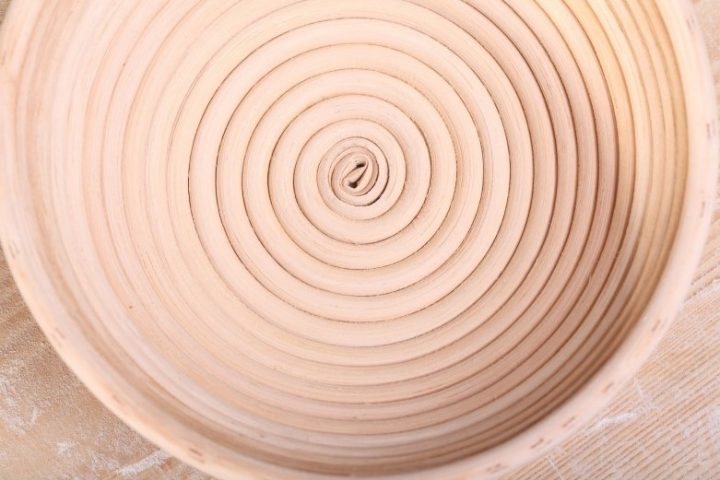
Wicker baskets, bannetons, brotforms, proofing baskets…you choose!
Klik hier voor de Nederlandse versie
We translated this earlier posting about proofing baskets from Dutch to English because of questions we got from novice bakers, about what type of baskets to use and how to use them.
Why do you actually use baskets to proof your bread?
A proofing basket lends support and shape to the dough during proofing. Baskets or ‘bannetons’ made from cane and baskets made from wood fiber with a spiral pattern leave behind a beautiful spiral shape as a print on the crust, a popular characteristic of rustic, hand-made loaves. Cane baskets also absorb a small amount of moisture during proofing so that the outside of the dough is less sticky. This very thin, slightly drier layer ensures that you can also cut the dough a bit easier (‘scoring’) and that the bread can open nicely during baking.
The most commonly used shapes are oval and round. The most used baskets have a total dough capacity of 500 g, 750 g and 1 kilogram of dough.
Take a look at our Weekend Bakery Webshop. Here you will find the best quality cane proofing baskets and also the wood fiber ‘brotformen’, a good initial choice for the novice baker. All our cane baskets are handmade within the EU from best quality ratan / reed.
Preparing and using
Cane baskets are always carefully prepped before their first use (see video below) and generously dusted with flour before each use. This first time prepping is not necessary for wood fiber baskets, they only need a coating of flour before each use.There are bakers who like to use rice flour, but we prefer to use the wheat flour that we also mainly use for the bread dough itself. Especially as a novice baker and not used to using the baskets, you can better use too much than too little flour. If necessary, the excess flour can be carefully removed with a brush before the bread enters the oven or, even better, after baking.
To free the bread from its basket, carefully turn it over on a bread peel or baking sheet. Hover the basket just above the surface, the dough will usually fall out automatically. If this is not the case, carefully tilt the basket back and forth, you will gradually feel the dough coming off and gravity do its work.
Only for proofing, never for baking!
A proofing basket, the name says it all, is only meant to let the dough proof, so it is not a replacement for a baking tin and can never go into the oven.
We do not wash our baskets, we shake off excess flour after each use and let them dry in a warm and moisture-free place. It is very important your baskets are never stored away damp to prevent mold formation! Occasionally you can brush out the baskets with a hard brush to remove old flour residues. After this, we would advice to prep them again, like the video below will show you.
If you see traces of mold appear in your baskets, place them in a preheated oven for 30 to 40 minutes at a temperature of 120 ºC to 140 ºC / 250 ºF to 280 ºF to kill the mold.
Instruction video for prepping a proofing basket
This video shows you how to prepare new baskets before using them for the first time. This preparation is important to prevent your dough from sticking to your proofing basket. This is especially true for the cane baskets, baskets made of wood fiber do not need this careful prepping, but they are more vulnerable for moisture, so again make sure you dry them perfectly. Because they work a little easier from the start, the wood fiber baskets are suitable for the novice baker. The cane baskets are more pleasing to the eye and also considered authentic and artisanal, as used by the real artisan (French) baker.



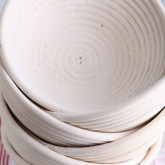

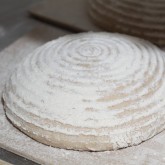
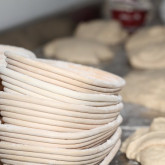
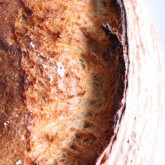
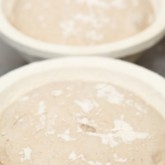
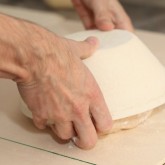
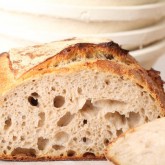
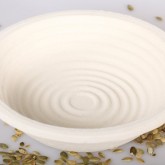

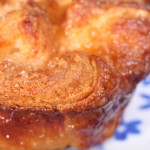
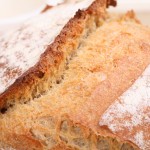
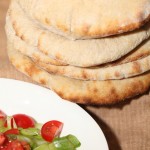
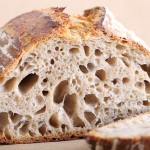
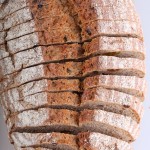
Claire says
I recently bought a silicone proofing basket, mistakenly thinking it’s none stick properties would make for an easier transfer to my Dutch oven.
I’m in the UK – do you think building up a residual layer of dried flour as per your video would work with silicone? Or am I doomed to failure as the silicone won’t absorb any moisture from the dough like cane will?
Weekend Bakers says
Hello Claire,
We do not have any experience with these silicone baskets, but guess you are right about the assessment about the moisture. We think the flour will not as easily form a coating on the silicon material as it does on the cane.
Maybe something like a pan coating spray might work for easier release. Then clean afterward.
Good luck with it!
Claire says
Thanks for the spray suggestion – I’ve gone down the route of proofing directly in my Dutch oven (with a spray of oil ) which has worked – tho I’ve not seen the size of oven rise I’d hope for cooking in a Dutch oven from cold.
I’ll try your suggestion next 😉
Avantika says
Hello
Can you proof with these in the proofing chamber?
Heidi Morton says
God Bless.
Vicki says
Do you cover bread when rising?
chris says
I would cover it with a dry tea towel
Bill says
I see where bannetons are used with sourdough but are they, or can they, be used with yeast bread dough?
chris says
yeast dough too, certainly!
Kathy says
Can the basket be used for pizza dough?
chris says
not much point, the basket is to create the final shape for baking. for pizza dough you may want it a little softer and letting it rise in regular bowl is more practical for cleaning. Keep it all in the same mixing bowl and clean up is faster
Sally Grissom says
I make French loaves which after the first proof, I flatten into a rectangle, roll up and proof again. Is it possible to just do the original proof in a bowl, divide the dough, shape somewhat and put into a proof basket. After it rises transfer it to my baking sheet and then bake? That would skip the flattening out of the dough and rolling it to form my loaf. Thanks!
linda sommers says
Prayers to you and your family. Thanks so much for all you do!
Pat Babcock says
You might update this to include prepping a banneton when using a liner. Basically the same process, except that the liner receives the light spray and flour coating, and is dusted with flour before each dough. These liners are usually linen or “flour sack”, or some other “nap-free” cloth. They are sometimes sewn from panels to be “form fitting”, and many include an elastic band to fit over the lip of the banneton. They can occasionally be laundered as well. I use them in all of my bannetons.
These liners may be a solution for our tropical baker – using a liner, the basket itself never comes in contact with the flour, and will not so readily grow mould. The liners can be removed from the basket, dried, folded, put into a plastic zip-closure freezer bag. Putting it into a sealed bag protects the liner from the humid air, and, if desired, could be stored int he freezer more readily than the basket itself.
Weekend Bakers says
Thank you so much Pat for this addition and sharing your experience!
Barbara says
Thank you! I thought so but never have seen a liner before
Wendy Jaycock says
Can you use a banneton to prove any dough or is it just for sourdough?
Weekend Bakers says
Hi wendy,
You can use any dough / bread you like.
Wendy Jaycock says
Thank you I’ll hold you to that😉
kafeimai says
Thanks for the article.
I have always wanted to ask if they can be used as replacement for baking tin? And you have answered well.
Weekend Bakers says
Yes, thank you, be sure to never use them in a heated oven!
Deb says
Hi
I love inn the tropics and it is extremely humid – therefore my baskets go mould very quickly (1-2 days they can be totally covered.
Do you have any recomendation how I can prevent this or what I could use instead.
I bought my baskets from the USA thinking the may be better quality but it still happens.
Thanks Deb
Weekend Bakers says
Hello Deb,
In your case it would probably be better to use plastic proofing baskets (hopefully more recycled ones are going to be made) that are easy to clean and more hygienic.
Normally when mold forms you can kill it by putting them in a warm oven at a temperature of 120 ºC to 140 ºC / 250 ºF to 280 ºF, like we state in the post. But in your case it would almost not be doable to repeat this every other day.
You probably see it in other things too, we do not think a better quality basket made of ratan or wood pulp would make a big difference. This warm moisture is the ideal breeding ground for mold.
So getting the air dryer by air conditioning would be the only option to change your indoor climate we guess. Store baskets in a bag in your freezer maybe?
Tips from other tropical bakers are very welcome!
Hui Wen says
I was given this tip by a longtime baker in Singapore – after every use of the banneton, after you finish baking your bread, turn the banneton upside down and leave it in the still hot oven with the door slightly ajar. As the oven cools, its residual heat is sufficient to drive away all the moisture from the banneton so that mould does not grow in it.
But I do not know if this will be successful if there is a lot of mould already growing in your banneton.
george says
The link ” our Weekend Bakery Webshop ” is broken.
Weekend Bakers says
Thank you so much for letting us know. They are fixed now.
Enjoy your (baking) weekend!
Michael Moore says
Thank you for the information on the brotformen. I purchased one on vacation in Poland but wasn’t sure how to use it. I guessed as to how to use it and the results were just fair. Your explanation helps a lot.
Weekend Bakers says
Thanks Michael,
Glad we could help. Enjoy your baking and the festive baking season!